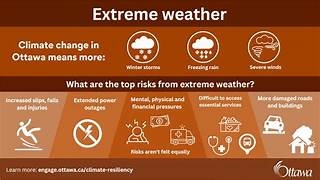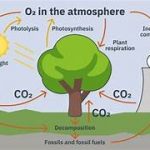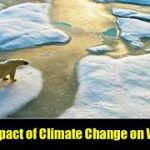Exploring the Relation Between Climate Change and Extreme Weather Events
Introduction
Climate change has emerged as one of the most pressing global concerns, influencing various aspects of our environment. One of the most significant consequences of climate change is the increasing frequency and intensity of extreme weather events. These events, including hurricanes, droughts, wildfires, and floods, disrupt ecosystems, economies, and communities worldwide. Understanding the connection between climate change and extreme weather events is crucial to developing effective mitigation and adaptation strategies.
The Science Behind Climate Change and Weather Events
Climate change is primarily driven by the accumulation of greenhouse gases (GHGs) in the atmosphere, leading to global temperature increases. As the planet warms, it disrupts atmospheric patterns, ocean currents, and weather systems. The increased heat provides more energy for storms, alters precipitation patterns, and intensifies natural disasters.
- Rising Global Temperatures – Higher temperatures increase evaporation rates, leading to heavier rainfall and stronger storms. Warmer temperatures also contribute to longer and more intense heatwaves.
- Ocean Warming – Rising sea surface temperatures fuel tropical storms, making hurricanes and typhoons more intense and destructive.
- Changes in Atmospheric Circulation – Climate change disrupts jet streams and other atmospheric currents, influencing weather patterns and causing prolonged droughts or excessive rainfall in certain regions.
Types of Extreme Weather Events Linked to Climate Change
- Hurricanes and Tropical Storms
- Warmer oceans provide more energy to tropical storms, leading to increased frequency and severity.
- Rising sea levels exacerbate storm surges, causing devastating coastal flooding.
- Heatwaves
- Higher global temperatures result in more frequent and prolonged heatwaves, affecting human health, agriculture, and infrastructure.
- Increased risk of wildfires due to dry and hot conditions.
- Droughts and Water Scarcity
- Changes in precipitation patterns lead to prolonged droughts in many regions, impacting water availability for agriculture and consumption.
- Desertification threatens biodiversity and food security.
- Heavy Rainfall and Flooding
- Warmer air holds more moisture, leading to intense and unpredictable rainfall.
- Increased flooding disrupts communities, damages property, and leads to loss of life.
- Wildfires
- Rising temperatures and prolonged dry conditions create ideal conditions for wildfires.
- Forest loss due to wildfires contributes to further greenhouse gas emissions, creating a vicious cycle.
Impact on Human Society and the Environment
Extreme weather events pose serious threats to human health, infrastructure, agriculture, and economies. The effects include:
- Health Risks – Heatwaves increase the risk of heat-related illnesses and deaths. Air pollution from wildfires exacerbates respiratory diseases.
- Economic Losses – Natural disasters destroy infrastructure, homes, and businesses, leading to significant financial burdens on governments and individuals.
- Food Security – Droughts, floods, and extreme temperatures reduce crop yields, leading to food shortages and increased prices.
- Displacement and Migration – Rising sea levels and natural disasters force communities to relocate, creating climate refugees.
Mitigation and Adaptation Strategies
To reduce the impact of climate change on extreme weather events, proactive measures must be taken:
- Reducing Greenhouse Gas Emissions – Transitioning to renewable energy sources, enhancing energy efficiency, and promoting sustainable practices can mitigate climate change.
- Improved Infrastructure – Building resilient infrastructure to withstand extreme weather events can prevent loss and damage.
- Early Warning Systems – Enhancing meteorological forecasting and disaster preparedness can minimize risks and save lives.
- Reforestation and Conservation – Protecting natural ecosystems helps regulate the climate and reduce the severity of weather events.
Conclusion
Climate change and extreme weather events are inextricably linked, posing significant risks to humanity and the environment. Addressing this issue requires global cooperation, sustainable practices, and investment in climate resilience. By taking proactive measures, we can mitigate the adverse effects and build a more sustainable future for generations to come.


